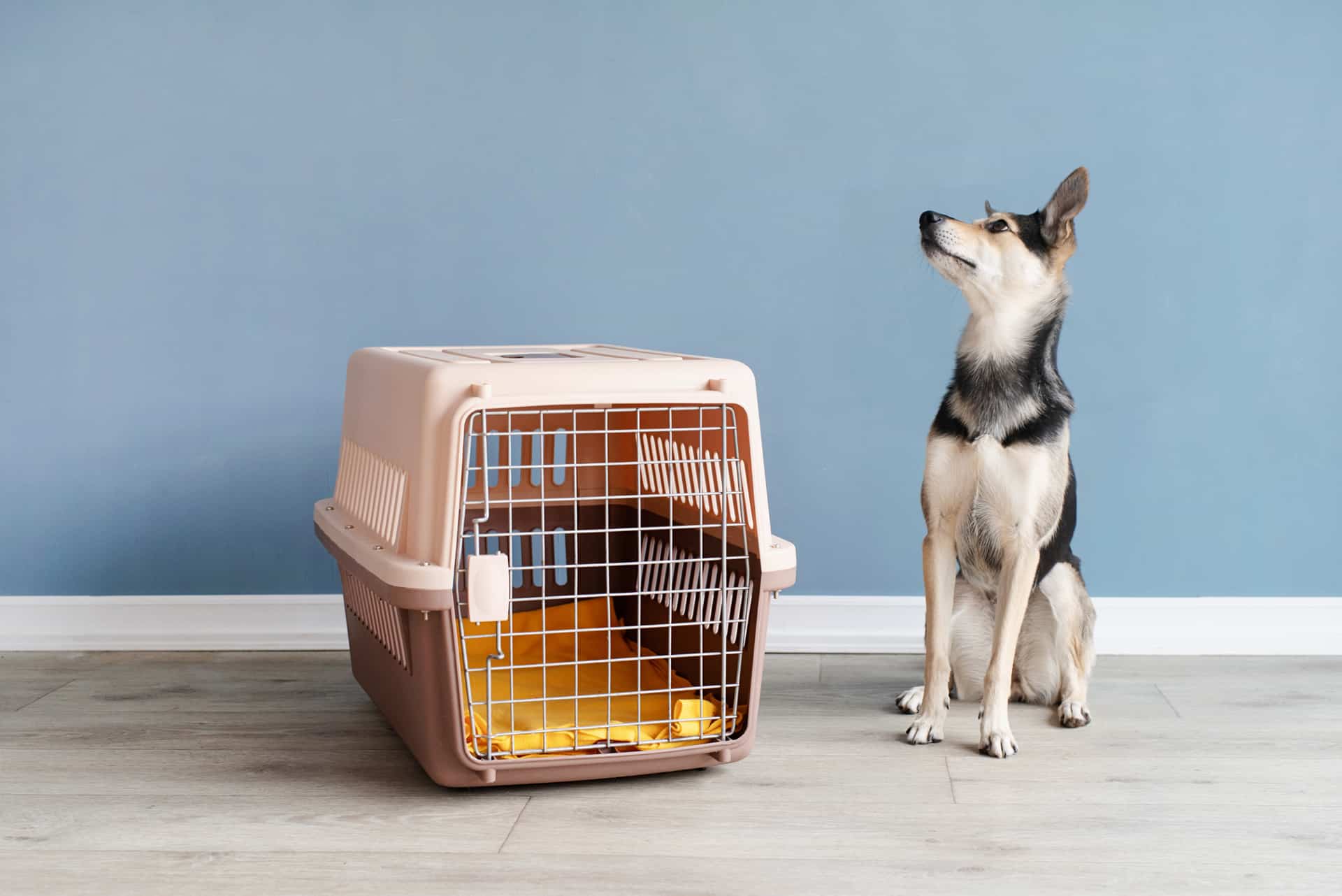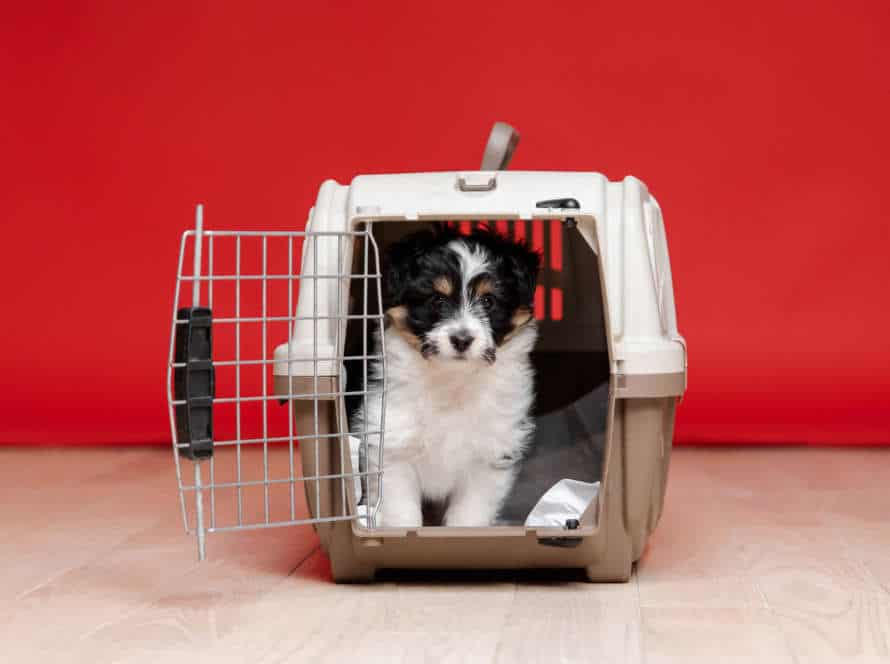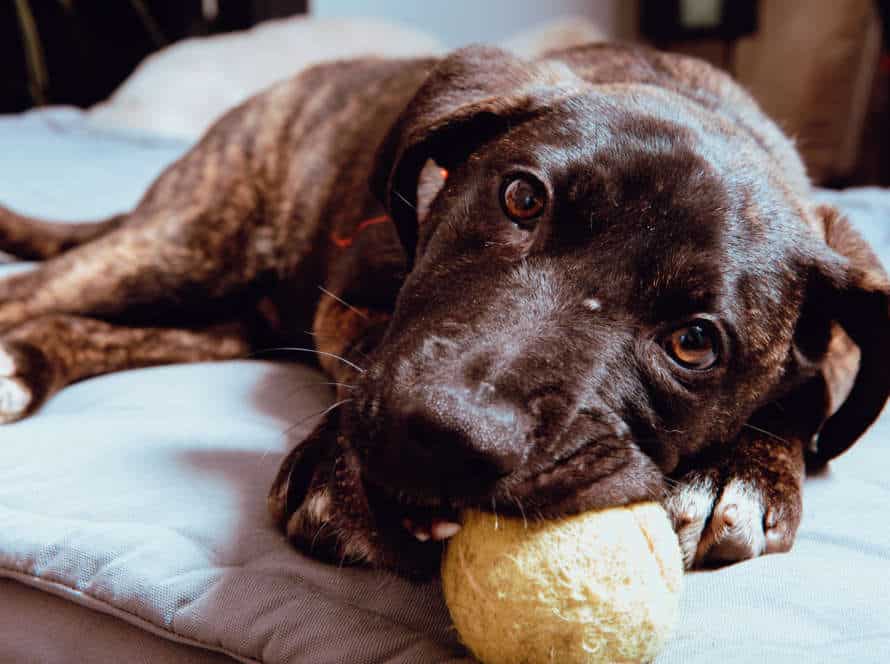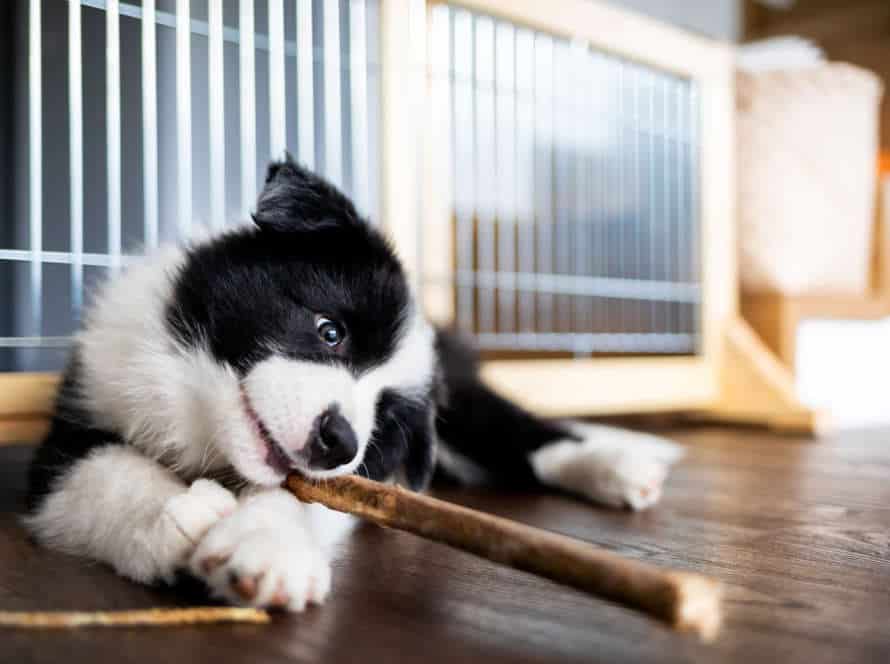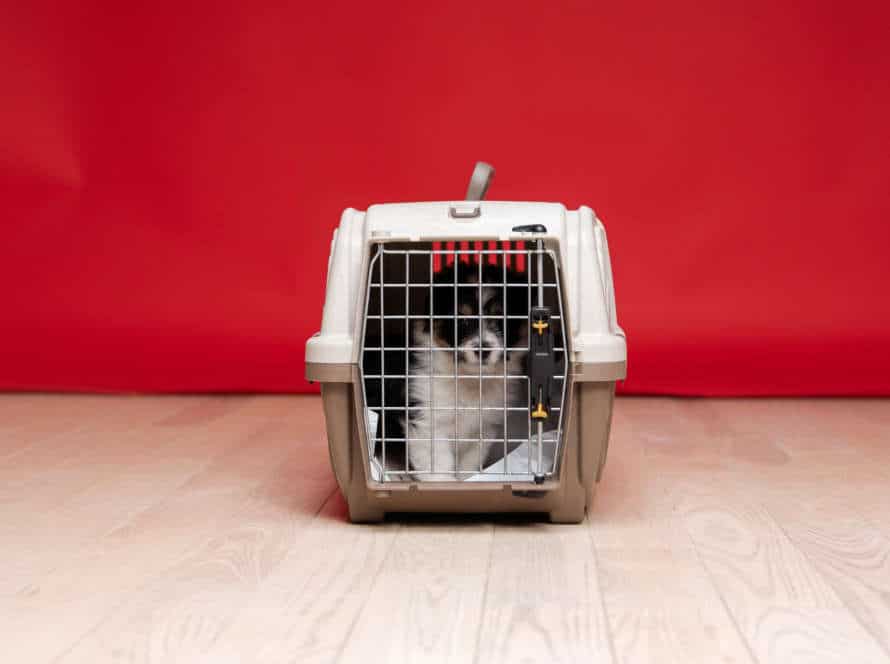Understanding Crate Training for Your Puppy
Crate training your pup is a great way to set up a sleep routine and make sure they don’t cause any trouble when you’re not around. But, it’s not that simple! It takes patience and consistency to make sure your pup feels comfy in their crate and is ready to drift off to dreamland. Let’s get into the details of crate training your pup, so they can have sweet slumbers!
Benefits of crate training for puppies
Crate training has benefits for both pups and owners. It can help create a comfy place for your pup to relax and sleep. Here are some advantages of crate training:
- House training help: Pups can use the crate to learn how to keep control of their pee and poop, and avoid messes in the house.
- A safe spot: Crates can be a safe place for pups to snooze or take a break.
- Traveling help: Crate training makes traveling with your pup easier and less stressful.
- Less destructive: The crate will keep your pup safely contained and out of trouble while you’re away.
- Better sleep: Crate training can help your pup sleep through the night.
Pro tip: Make introducing your pup to the crate a positive experience by giving them treats, toys, and praise.
When and how to start crate training
Crate training is an awesome way to make your pup feel safe and form good behaviors. Start it when you bring them home! Here are some tips:
- Choose the right crate – not too big for them to stand up and turn around in, and not too small so they don’t go potty in one corner and sleep in another.
- Make it comfy – add a soft blanket, toys, and treats.
- Start slow – keep the door open and let your puppy explore inside. When they’re comfortable, feed them their meals in the crate.
- Introduce sleep time – help your pup sleep through the night. Place the crate close to your bed, so they don’t feel alone.
- Be patient – crate training takes time and patience. Don’t rush your puppy. Increase their tolerance gradually.
Tips for introducing your puppy to their crate
Introducing your pup to a crate can be great for training and helping them sleep through the night. Here are some tips:
- Start slow. Let them explore the crate on their own, adding treats & toys as an incentive.
- Positive reinforcement! Give lots of praise and treats when they enter the crate.
- Make it comfy. Soft bedding or blankets will make it cozy and inviting.
- Gradual confinement. Once pup is comfy, start closing the door for short periods and increase duration. Stay nearby.
- No punishment. Crate should be a safe, positive space.
- Consistency is key. Stick to a schedule and make it part of their routine.
Pro tip: Make sure the crate is the right size for their comfort & safety.
Setting up the Perfect Sleeping Environment
Making the ideal sleep spot for your pup is a must for them to snooze through the night in their crate. Here are some tips and tricks to make it happen! Ensure that your puppy is cozy in their crate: give them a bed, cover it with blankets, and keep the noise level low. Make it their special place!
Choosing the right crate for your puppy
Selecting the ideal crate for your puppy is essential. It’ll help create a great sleeping atmosphere and let them slumber peacefully throughout the night.
Here are some factors to contemplate before choosing a crate:
- Size: Pick one that is spacious enough for your pup to stand, spin around, and relax.
- Material: Opt for a crate made of strong and lasting materials like metal, plastic, or wood.
- Ventilation: Guarantee that the crate has suitable ventilation for good air flow.
- Accessibility: Opt for a crate with a door that can be opened and closed without hassle.
- Comfort: Line the crate with cushy bedding like covers, towels, or a fluffy dog bed.
By considering these factors, you can pick the right crate for your puppy and assist them in developing a pleasant sleeping routine.
Placing the crate in the ideal location
Finding the right spot for your pup’s crate is key. To help them sleep better and feel secure, here are some tips:
- Pick a quiet area with little traffic. This will stop disruptions.
- Make sure the crate is away from drafts, sunlight, and air conditioning vents.
- Keep it close to your bed if you can, so they can hear and smell you. This will reduce anxiety.
- Cover the crate with a blanket or towel to give it a den-like feel. This will make your pup more comfortable.
Creating a comfortable sleeping area inside the crate
Creating a comfy sleeping space in the crate is essential for your pup to sleep through the night. Here’s how to make the perfect sleeping environment:
- Choose the right size crate. It must be big enough for your pet to stand up, turn around and lie down comfortably.
- Add soft bedding, like a dog bed, blankets, or towels. This will give a cozy and warm area for puppy to sleep.
- Cover the crate with a blanket or sheet. This will make your pup feel secure and stop any unneeded stimulation.
- Keep the area dark and quiet. Switch off the lights and ensure nothing can wake your pup.
- Give a small treat or toy to your puppy before bedtime. This will make them associate the crate with something nice.
Pro tip: Take your pup outside for a potty break before bed to avoid accidents at night.
Establishing a Bedtime Routine to Encourage Sleep
To help your puppy sleep in its crate, a bedtime routine is a must. Get them accustomed to the idea of going to their crate and set up cues that make it simpler. This will help your puppy understand their crate is a safe and cozy place to sleep.
Developing a consistent sleep schedule
A steady sleep routine is important for a good night’s rest and a refreshed feeling each morning. Creating a bedtime routine can help you reach this goal and help your puppy sleep in their crate. Here are some tips:
- Set the same bedtime and waking time every day, even on weekends.
- Make a calming bedtime routine, like a warm bath or reading a book, to tell your body it’s time to wind down.
- No caffeine, alcohol or heavy meals before bed, as these can stop sleep.
- Limit screen time before bed – blue light from electronics can alter your circadian rhythm and prevent sleep.
- Consistency and patience are key to develop a sleep schedule. Keep to the routine and eventually you’ll have a natural rhythm for better sleep.
Activities to help your puppy wind down before bedtime
Create a bedtime routine for your pup. It’s important for their well-being and sleep hygiene. Here are some activities to help them relax:
- Calm playtime: Play with them, but not too intensely.
- Gentle massage: Massage their muscles to relieve tension and anxiety.
- Quiet time: Spend quality time, with dimmed lights and soft background music.
- Potty break: Go for a final potty break, and back to their crate.
- Consistent routine: Do the same activities every night.
Tip – Don’t feed them right before bed, they could need a potty break at night.
Using white noise or calming music to help your puppy sleep
White noise or calming music can help your pup’s sleep. Here’s how to do it:
- Get a machine or music made for dogs.
- Put it near the crate, but not too loud.
- Turn it on before putting pup in and keep it on all night.
- Follow this routine regularly for good sleep habits.
Pro Tip: You can also use a pheromone diffuser or spray to create a calming environment.
Solving Common Problems That Keep Puppies Awake
Owning a pup can be thrilling and complex. A tough part of owning a pup is helping them sleep in their crate during the night. There are some typical issues that can cause puppies to stay awake, making it hard for them to relax. In this part, let’s look at some of the most common dilemmas and give solutions to help your pup sleep calmly throughout the night.
Barking or whining in the crate
Is your pup keeping you up at night, barking and whining in their crate? Here’s some advice on how to help get a good night’s rest.
- Exercise them well before bedtime – a tired pup sleeps better.
- Give them a cozy, soft bed in the crate.
- Cover the crate with a blanket or towel – it makes them feel safe.
- Place the crate in a quiet, dark room with no distractions.
- Ignore their barking/whining unless it’s time for a potty break.
Pro tip: Consistency is key. Stick to a regular feeding/sleeping schedule and your pup will learn that the crate is for sleep and relaxation.
Frequent potty breaks overnight
Frequent overnight potty breaks can be a bother for puppies. But, there are techniques to help them slumber in their crate. Here are some tips that can help with potty training and build a comfortable sleeping environment.
- Be consistent with a potty schedule. Take the pup out every 2-3 hours during the day.
- Before bedtime, reduce food and water intake. Remove their bowl 2 hours before bed.
- Make their crate cozy with blankets and familiar toys. This’ll make them feel secure.
- Create a bedtime routine. This’ll link going to sleep with the end of the day. You can take a walk or do a calming belly rub.
- Remember to be patient during potty training. Celebrate small successes and stay consistent. Eventually, you’ll have a well-trained pup that sleeps through the night.
Separation anxiety or fear of the crate
Separation anxiety and fear of the crate can stop puppies sleeping. These issues can be sorted out!
Separation anxiety:
- Take time each day to spend with your pup.
- Start off by leaving them alone for short periods, slowly increasing the time.
- Provide toys and treats for when you’re away.
- A white noise machine or calming music can help them relax.
Fear of the crate:
- Make the crate a comfy place with bedding and their favourite toys.
- Let them explore it, with the door open.
- Use positive reinforcement training.
- Start with short crate times, gradually lengthening it.
Remember: Consistency and patience are key! By following these tips and providing a calm and positive environment, your pup will soon learn to sleep through the night in their crate.
Gradually Extending Sleep Time in the Crate
Puppy crate-sleeping? Start gradually. Increase sleep-time in the crate bit by bit. Helps them get familiar and feel at home. Here’s some tips and tricks to extend sleep-time while in the crate. Enjoy!
Slowly increasing the amount of time spent in the crate
Helping your puppy sleep through the night in their crate? Here’s how!
- Start by having them in the crate for short periods, when you’re around.
- Give treats & toys for encouragement.
- Increase the time spent in the crate gradually. Aim for 30-60 mins.
- Eventually, leave them inside overnight.
- Provide a comfy bed & toys to keep them entertained.
- If they cry/whine, wait until they calm down before releasing them.
- Eventually, they’ll get used to sleeping in the crate & won’t wake you up!
Rewarding good behavior in the crate with treats and praise
Reward your pup’s good behavior in the crate with treats and praise. This will help them to sleep through the night. Start slowly, making the crate a positive place with treats, verbal praise, and toys. Build confidence by increasing the amount of time spent in the crate. Reward good behavior with treats and words.
Monitor your pup for night time bathroom breaks, and gradually increase the time until they can sleep soundly all night long. Make sure the crate is cozy and comfortable, with enough space for them to move around.
Gradually moving the crate out of the bedroom
Gradually moving the crate away from the bedroom is key to helping your pup get used to sleeping alone. Here are the steps to follow:
- Put the crate next to your bed at bedtime.
- Move it a few inches every night until the desired spot is reached.
- If pup whines or seems anxious, move it back and try again next night.
- Consistency is everything. Your pup will eventually learn that crate is comfy and safe, even not in bedroom.
Moving Beyond the Crate
Reaching the next level with your pup? Let’s make sure they sleep soundly! Ensure they’re comfortable in their new sleeping spot. Give them enough room to move and snooze. We’ll show you how to make it cozy and secure. Now, let’s make some moves!
Transitioning your puppy to sleeping outside of the crate
Transitioning your pup to sleep outside its crate needs a gradual approach & patience. Here’s how:
- Gradually increase the distance between the crate & bed.
- Place the crate in its designated sleeping area with open doors. Let pup explore & get comfy.
- Try leaving the crate doors open. Pup can come in/out as they please.
- Place a comfortable bed/blanket in the area & encourage pup to sleep there by offering treats/toys.
- Be consistent & reward pup for good behavior. Help them adjust to their new sleeping arrangements.
- Provide pup ample opportunity to use the bathroom before bed & avoid feeding/giving them water too close to bedtime to prevent accidents.
Setting up an alternative sleeping area
Setting up an alternative sleeping spot for your pup is a great idea to give them comfort. Here are some tips:
- Choose a peaceful place, free from distractions.
- Have a cozy bed for pup to sleep on.
- Put pup’s favorite toys around the area.
- Include familiar smells like your scent or the blanket from their crate.
- Each night, move pup further from the crate to adjust to independent sleeping.
- Be patient and consistent, and soon pup will sleep through the night.
Encouraging your puppy to feel comfortable sleeping alone.
Want your pup to sleep without a crate? Here’s what to do:
- Gradually move their crate further away from your bedroom.
- Give them a comfy bed in a separate location. Include their favorite toys and items.
- Set up a bedtime routine – 10-15 minutes of slow winding down. Read them a story or sing a lullaby.
- Give them plenty of exercise during the day.
- If they get restless or vocalize, wait 5-10 min before reassuring them with a quiet “goodnight”.
- Be consistent. With time, your pup will sleep soundly through the night.
Frequently Asked Questions
1. How do I get my puppy to sleep through the night in their crate?
The key is to establish a routine and stick to it. Make sure your puppy has plenty of exercise and playtime before bed to tire them out. Use a soothing tone when placing them in their crate and offer comforting items such as a soft blanket or toy.
2. Should I leave food and water in my puppy’s crate overnight?
No, it’s not recommended to leave food and water in the crate overnight for two reasons. One, your puppy may have accidents in the crate if they need to use the bathroom. And two, leaving food and water can disrupt their sleep and cause them to wake up more frequently.
3. How often should I take my puppy out during the night?
It depends on your puppy’s age and bladder control. Generally, a puppy can hold their bladder for one hour for every month of age. So for example, if your puppy is 3 months old, they may need to go out once or twice during the night.
4. What should I do if my puppy cries or whines in their crate?
It’s best to resist the urge to let your puppy out of the crate when they cry or whine. This can reinforce the behavior and make it harder for them to settle down in the future. Instead, try comforting them from outside the crate with a soothing voice or by placing a hand close to the crate.
5. How can I make my puppy’s crate more comfortable?
Provide soft, comfortable bedding for your puppy to sleep on. A small crate can also help them feel safe and secure. Additionally, adding a cover to the crate can create a cozy den-like environment that can help your puppy feel more relaxed.
6. When should I start training my puppy to sleep in a crate?
It’s best to start crate training as early as possible, ideally within the first few weeks of bringing your puppy home. This will help establish a routine and teach your puppy that the crate is a safe and comfortable place for them to sleep.

